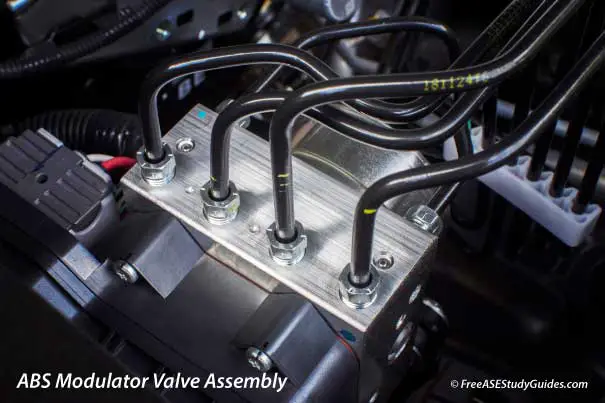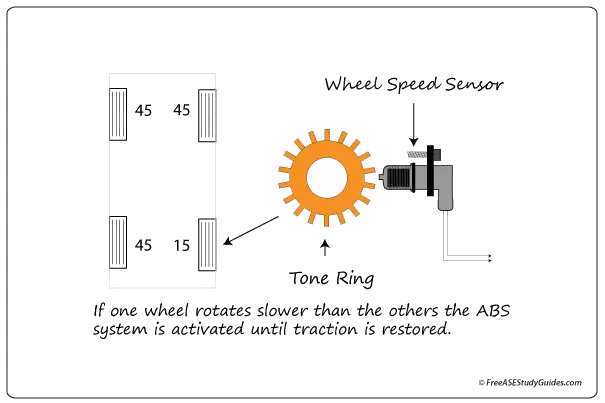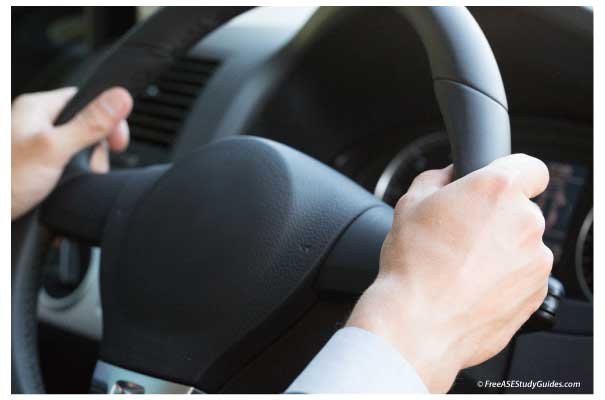ABS Brake System Channels

Different manufacturers use different names and configurations to provide skid control. Channels classify ABS systems. The most straightforward system is the one-channel two-wheel with one circuit controlling hydraulic pressure to both rear wheels. This system uses a one-speed sensor bolted to the axle housing. This lone sensor inputs a signal to control both rear hydraulic brake circuits. A two-channel, two-wheel system has a wheel speed sensor and hydraulic circuit dedicated to each rear brake circuit.

Three-channel-four-wheel systems found on many light trucks and SUVs use three-wheel speed sensors, one for each front wheel and a single sensor for the rear brakes. The rear brakes also share a hydraulic control circuit for both sides.

The most efficient ABS brake system is the four-channel, four-wheel system. This system has a speed sensor and hydraulic circuit dedicated to each wheel. The ABS module controls each rotation during a skid situation. In addition, this system offers improved steering control during a skid.

A wheel speed sensor sends a signal to the ABS controller. The controller compares this data to the preset data and parameters stored in its memory. Next, the controller powers the circuit's valve in the hydraulic brake modulator to hold, decrease, or increase hydraulic pressure to the brake circuit.

The diagonal-split systems on older front-wheel-drive vehicles use two-wheel speed sensors to control four wheels. They offer steering control as well as skid control. The LF circuit shares the same modulation as the right rear, and the RF wheel speed sensor shares the same hydraulic control as the left rear.